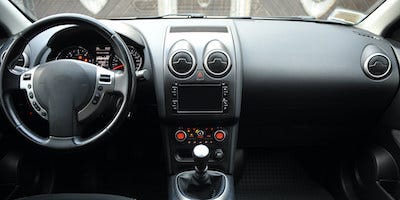Engineering bioplastic paintable to Class A finish
Resin supplier Eastman collaborates with NB Coatings to offer sustainable automotive plastic. Sourced from sustainably managed forests, Trēva engineering plastic has bio-based content of 42–46 percent as well as chemically-recycled content.
November 26, 2019

Specialty plastics supplier Eastman is collaborating with NB Coatings, a leader in paint on plastics solutions, to create a new solution for interior Class A painted surfaces with Trēva engineering bioplastic. Trēva is said to offer a viable option for companies interested in creating sustainable, cost-effective products.
|
Bio- and recyclate-based engineering plastic is paintable and can replace PC, ABS, and PC/ABS resins in auto applications. |
With the recent commercialization of its carbon renewal technology, Eastman produces Trēva with bio-based and recycled content. When painted with NB Coatings paint systems, Trēva can meet the demanding Class-A surface requirements as specified by auto OEMs.
"Trēva provides a bio-based, sustainable alternative to polycarbonate, ABS and PC/ABS for interior automotive applications at a cost-neutral position," says Chris Scarazzo, Eastman automotive market segment leader. "Eastman's material innovations match what OEMs need to develop lasting parts with sustainable materials and help them achieve their goals for sustainable content and replacement of petroleum-based plastic."
Sourced from sustainably managed forests, Trēva has a bio-based content of 42–46 percent, which is certified by the USDA's BioPreferred program. To continue reducing waste and maximizing resources, Trēva benefits from carbon renewal technology, Eastman's proprietary recycling process that recycles waste plastic typically sent to landfills or found as litter in waterways.
Carbon renewal technology is a chemical recycling technology that diverts mixed waste plastics from the landfill and converts them to simple molecular components that are then reintroduced in the production of a variety of Eastman products, including Trēva—without performance compromise.
In automotive applications, cellulose-based Trēva reportedly exhibits high performance and reduced environmental impact. With optical and birefringence properties, it provides high clarity and superior strength and is suitable for applications such as human-machine interface (HMI) lenses.
Trēva also withstands the challenges of automotive interiors, including high temperatures, humidity, UV, scratch/mar and general durability requirements. Trēva has low VOC emissions, which is critical for interior parts. Its processing ease and excellent flow enable good dimensional stability and thin-wall designs for less material usage and lower weight.
"As an environmentally conscious coating provider, NB Coatings is excited to announce this paintability breakthrough in collaboration with Eastman," said Jesse Fritcher, NB Coatings vice president of technical. "Our trials with Trēva found adhesion of our coating technologies to be comparable to, and in some cases better than, that achieved with traditional grades of PC/ABS, providing new sustainable options for automotive design engineers."
About the Author(s)
You May Also Like





